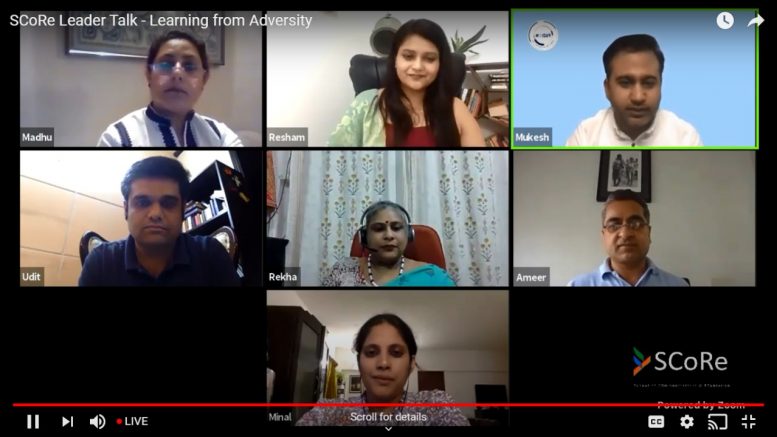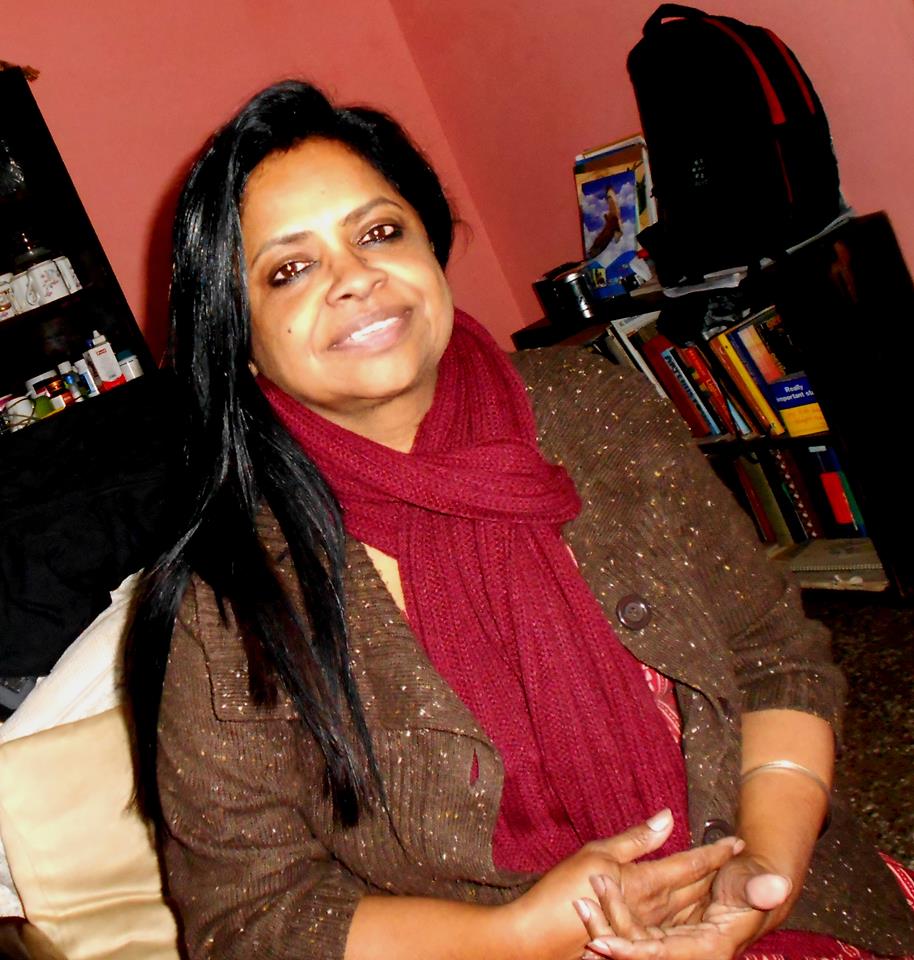Adversity can break you or make you, we have often heard. In business, disruption has become a norm – something that business owners have to face. Now, with uncertain economic times ahead, there are more challenges on the horizon.
Most business owners or leaders are now aware that they will be waylaid by challenges. Overcoming difficulties in life helps us understand our weaknesses, grow our strengths and strike success. But, the current COVID-19 pandemic has thrown everyone off gear. Or is it the opposite?
The talk on “Learning from adversity” moderated by Resham Chhabra, Head of Communication at NestAway Technologies – really threw up some interesting facts on how the PR business is facing this unprecedented situation. Are we adapting and innovating? How closely will it change the consumer behavior? Shopping patterns will change. Will there be ‘revenge shopping’, post COVID? Madhu Chhibber, Chief Executive Officer, Madison PR said it is a “shock phase” and we are moving into a disruption phase, where the normal rhythm is broken and consumers will be experimental. “Brands will continue to show their human face,” she revealed and quoted the recent Asian Paints digital film, that brought back the popular ‘Har Ghar Kucch Kehta Hai’ campaign to create awareness about the importance of staying home through its messaging #StayHomeStaySafe. Brands are indeed, diving into nostalgia and how. Communication is changing, the environment is changing. The defining moment she felt will be e-commerce and the winner will be brands that foster a sense of community.
Future of brand-customer relationship?
After the onset of adversity, what would brands do? Will brands shift to offer a clear value proposition for customers that would rejuvenate the company’s brand? Now the consumer is dictated by the environment and a bit of fear, suggested Ameer Ismail, President, GolinOpinion. Consumers will notice those brands that take action with ‘truth’ standing out – e.g. Lifebuoy, which reduced the prices, which was well appreciated by consumers. “When it comes to brands, communication that allays fear, and is delivered digitally, will be relevant to consumers,” he shared.
The times of adversity are indeed, the ultimate stress test for consumer-brand relationship. In the COVID times, the relationship between brands and consumers has grown increasingly by adding a social voice. Conditions on the ground are changing by the day, and Minal D’Rozario, Co-Founder & Director, Ideosphere Group noted that post-COVID, there will be a clear change indicated – how we will buy and consume brands. “So conscious living will be important”. Today we are flooded with information, so brands should concentrate on the kind of content they are creating for it will make a difference!
With a disruption in the work environment that has swept in, Udit Pathak, Founder & Director, Media Mantra was clear about the learnings that have emerged – A PR firm can be run virtually on WFH mode, you need to listen to clients because they are in a bigger problem, and technology will play a bigger role in the future. “And if you can talk predictive analysis and solutions, clients will need this. We have to behave as a consultant, not a firm,” he stated.
How does consumer behaviour change when consumers are locked in at home? How are consumers going to change, when confronted with this new adversity? “It will be about availability over choice,” said Mukesh Kharbanda, Managing Director, Fuzion PR and added, “We will have to evolve and bring about innovations. However, as a business, as we have faced odds earlier”. Looking at their China office for signals was Rekha Rao, Managing Director at Zeno Group, which was a fantastic live example of what companies are going through. They mapped mind-shifts and did a data analysis of China around consumer behavior and came with five stages. Firstly there’s a stage of denial and defiance, followed by fear and depression, then came acceptance, compassion and creativity leading to resurgence (which Wuhan has arrived at, now). “A shift has happened, and we will see whether it’s here to stay,” she said.
Innovations emerging for clients?
With evolving times, the needs of clients are evolving and the message has to be authentic. How can this innovation be managed? Brand promise is something they have been doing earlier, but the innovation here, is in the message of ‘safety’, which is more relevant, in today’s context, pointed out Ameer. It is this pause that has given a rebirth to innovation of products, according to Minal, who noticed that technology integration has become important with her portfolio of clients.
So, as communication professionals, what tech tools are going to become critical for clients, so that they can be prepared for the future? Post-COVID people are scared about health concerns, the economic downturn and we have to keep this mind. “We have to go from painting a rosy picture to holding a mirror in our hands,” said Mukesh, without batting an eyelid; and he also emphasised that internal communication is equally important, specially as mental issues surface which need to be addressed. Elevated levels of hygiene and safety protocols will be the expectations of everyone, explained Madhu. Theft and security issues will also appear with technology, so Udit felt we need to “look at the legal side seriously and invest in technology too”.
How to package the message?
It’s really a challenge during a crisis, to determine what to say and how to say it. While any crisis is disruptive, today it has already changed business and life as we know it. In all this crisis communication, how much is too much?
Brands have moved away from basic communication – e.g. the hand wash messages. How sensitively and relatively a message can be packaged is key, expressed Rekha while Ameer pointed out that looking at the dynamics of communication, today we have to make it real, authentic and transparent. Communication must make sense or there will be a backlash. Agreeing on the transparency angle, Madhu said that we need to sense the sentiment and communicate in that flavor and affirmed that “communication is a healthy rhythm and very much part of the Madison world”.
Communication can become an anchor and it’s about listening and sharing both internally and externally shared Minal, backed by the experience of having worked with many start-ups. Connecting with the team is vital was a point agreed by all. Certainly learning more about colleagues’ lives was a revelation to Madhu which, she felt adds value. Udit revealed that he was amazed at the maturity and the huge potential he was seeing at the middle/junior levels which is also leading to ideation, which is being appreciated by clients.
When the going gets tough – what is the role of media and PR?
With all the changes that we are experiencing, how about the role of media? Digital consumption has shot up today. What about regional media and when will it recover? Operating in Tier 2 and 3 towns, Mukesh disclosed that “digital has happened already,” and he was very clear that authentic channels of communication will never die, but will sustain.
In times of adversity, it’s important that you have to re-focus and adjust to meet the demands of the situation. And, to shape up when the going gets tough, what are the options open to PR? Does PR need to be more targeted? Yes, it will become more targeted was Udit’s firm belief while Minal felt the solution will not point to digital PR or traditional PR, but that “we are moving to a stage when we will become real consultants and partners for our clients”. It’s not about “great ideas” opined Rekha.
In this unsure, complicated situation, have clients become more responsive? Are business leaders trying to communicate better? How is PR adding value to clients and making brands more visible? Putting it in a clear equation was Mukesh who explained that communication has shifted from the 3Ps (Positioning, Power, Prosperity) to the 3 Hs (Hope, Health, Happiness).
We all must work through this new “normal” together. And most importantly, we must remember that there is no precedent to indicate how businesses should act. It’s a time for business continuity (even if there are cuts and deferred payments from clients) was the point put forth by Udit. It’s a time for introspection and to diversify your service line, as Minal put it.
How much will post-COVID affect education? Will business schools, which specialise in communication need to change the curriculum to enhance special skills? Definitely, advised Madhu. Who felt that we should figure out new ways of doing things and “add to the layer of learning”.

The views and opinions published here belong to the author and do not necessarily reflect the views and opinions of the publisher.






Be the first to comment on "SCoRe Talk 2: Learning from Adversity"